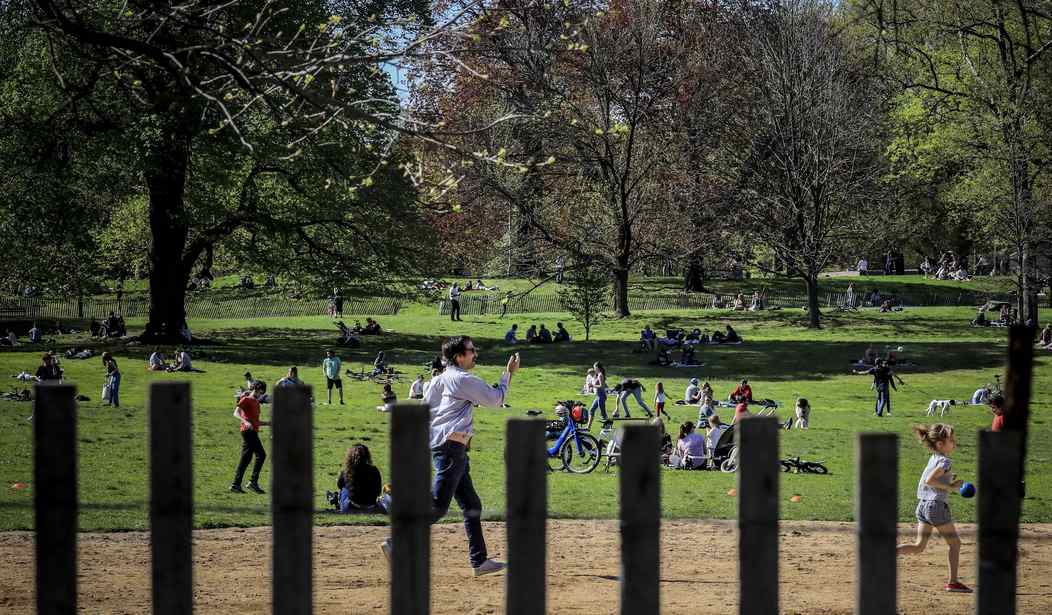Suzy Weiss has really become one of my favorite writers. She tells interesting stories that I think most writers would overlook. Case in point, today she has a story about the Park Slope Panthers, a would-be neighborhood watch in Park Slope, Brooklyn. The impetus to start the group came after a series of crimes in the area:
…a thief absconded with $200,000 worth of jewelry in a smash and grab, three boys stole a bunch of iPhones off of subway riders, a ticked off customer attacked the owner of a bike store, $6,000 was stolen from an auto shop, and a beloved pet was catnapped from a bodega on Seventh Avenue.
But the last straw was a homeless man who attacked a woman and her golden retriever named Moose while they were taking a walk in the park. The woman wasn’t seriously injured but her dog was and, after surgery, died a couple days later.
To his credit, a local named Kristian Nammack decided it was time to do something about the crime disrupting his neighborhood. He posted something on the social media site Nextdoor asking if people wanted to form a “community safety patrol.” “Think what the Guardian Angels did to take back the subways in the 70s/early 80s,” he wrote. He suggested the group could adopt the name “Park Slope Panthers.”

The nascent “safety patrol” held its first meeting last Saturday morning and, as Weiss describes it, it was awkward from the jump.
The Venn diagram for Park Slopers and Democratic voters is pretty much a circle. No one wanted to be labeled Park Karens. This made the whole crime-fighting thing a bit awkward: “It’s about finding a way that’s non-biased to report these things and have people feel like it’s safe here,” said Emily, one of the Panthers.“You don’t want to fall into that stereotype of privilege.”
A group of four who looked to be in their early twenties—three women and one man—rolled up about 15 minutes into the meeting. “Are y’all the Park Slope Panthers?” The one who asked was dragging a speaker on wheels and playing electronic music, presumably to drown out the meeting. “We are super not into you guys having your meeting or doing anything in the park.”
The young activist—who was white, wore glasses, grew up in Park Slope, and had a medical-grade face mask on, like his three comrades—was also super not into the cops, or anything resembling the cops. When Nammack told him we were taking turns introducing ourselves, the activist informed Nammack that he “wasn’t super into abiding by the structure that you’re setting up.”
Another man showed up to criticize the group for daring to call themselves “Panthers.” Another girl picked up that criticism saying, “It feels antithetical to what the Black Panthers would stand for.” For the record, she’s right about that. Eventually the group got around to discussing the dangerous homeless man with the stick, the one who had killed the dog named Moose. One of the young people who’d stopped by to criticize the group had thoughts.
The kid with the speaker spoke up: “So, it sounds like this person has been pushed out of an unimaginable amount of systems.” He added that the assailant was probably “neurodivergent.”
“Crime is an abstract term that means nothing in a lot of ways,” said Sky. “The construct of crime has been so socially constructed to target black and poor people.”
And it just sort of keeps going like this. The first meeting never really settles anything. Would the Park Slope Panthers actually go on patrols? Would they be called Panthers? What would their goals be, exactly? What would they do if a violent homeless man attacked them with a stick?
As Weiss wraps up the story you can kind of feel the energy to do something about the very real incidents of crime being cut down by a thousand woke concerns about power and privilege and capitalism. For every actual crime, one can imagine how a Marxist lens and a series of identity based excuses for the perpetrator would all but mandate that people do nothing, certainly nothing that might result in actual punishment. If you think about it long enough, what does “crime” mean anyway?
Kristian Nammack eventually decided to meet with people from the office of his local council person about the dangerous man with the stick. The reaction wasn’t what he’d hoped. “They said their biggest concern is that the perpetrator is not arrested and sent to Rikers because they are concerned for his wellbeing!!!” he wrote to the newly formed safety patrol. It seems no one in Brooklyn is concerned about crime, only about protecting criminals.
It’s a very narrowly focused story about one neighborhood in Brooklyn but the genius of it is that it helps explain how trendy ideas about criminal justice reform can infiltrate any city and completely sap it of the will to fight back against disorder, crime and violence. This story probably explains a lot about why Portland, San Francisco, Seattle and Los Angeles are struggling to respond to their own problems with this same type of persistent, low-level crime. Again, the whole thing is worth reading.







Join the conversation as a VIP Member